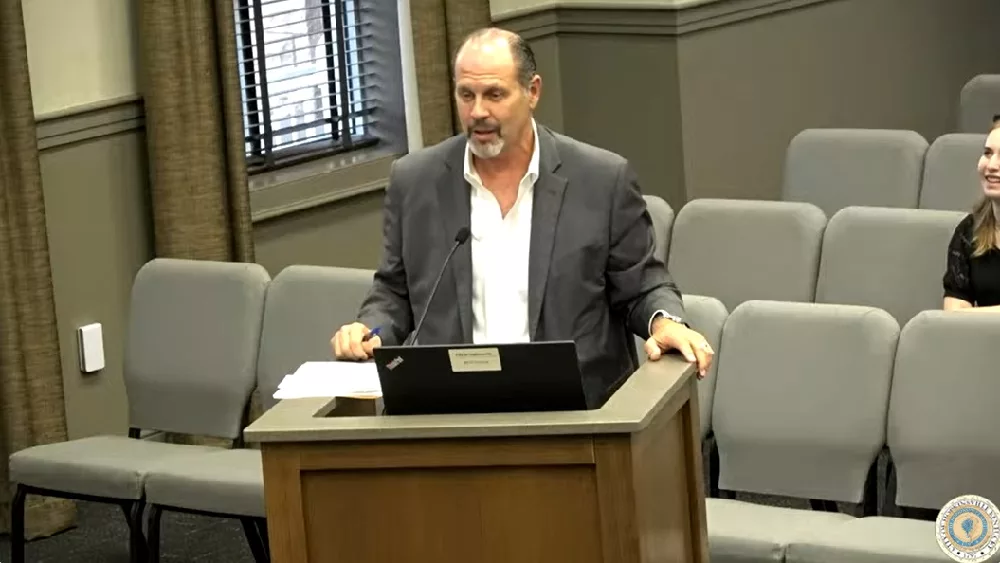
No matter where one goes in the country, the workforce challenges are the same. Soft skills, retention and tepid volumes of applicants — over- and under-qualified — plague America in a post-COVID-19 world, and for a number of mostly-correctable reasons.
During Monday’s gathering of the South Western Kentucky Economic Development Council, noted partner and Tennessee Valley Authority Workforce Consultant Alex Sadler counseled officials from Trigg, Christian and Todd counties — by addressing the nuances of job creation and employment data.
At the top of the country’s shortcomings, she said, is affordable and reliable child and family care — something she noted was “incredibly exacerbated” during the pandemic.
And the problem has been, and is now, two-fold. With schools out and health a concern, families needed to take care of children, elderly parents and grandparents. It forced realignment of work strategies. School went online. Daycare workers were, and still are, hard to find because the pay is so poor.
When one does find appropriate facilities, the costs can be, and usually are, exorbitant. Sadler said over the last three years, this has forced some family units to move toward one-income households with stay-at-home partners — because the cost of child care nearly equates to median salaries.
Furthermore, Sadler noted stay-at-home, remote and freelance jobs are becoming much more common than they were in the past, while careers through industry, food service, hospitality and “face forward” opportunities dealing with the public look less desirable.
Her example, retailer box-store Target, which in Clarksville has a starting pay of at least $15/hour.
Sadler also pointed out that COVID-19 only magnified wage inequity, poor worker reading levels across the board, and boosted a freelance economy that by 2030 is expected to be higher than 50% of all available workers — only further drying up qualified applicants for local and regional industry.
Furthermore, Sadler described today’s prime workforce participation rate of 62.4% as those aged 25-to-54, with most of them seeking improved work-life balance, modest benefits and a chance to holistically build.
So while unemployment hovers between 3% and 5% in Trigg, Christian and Todd counties, why does workforce participation sit below 60%? Why are more than 30% of those aged 25-to-54 not actively seeking gainful employment? Sadler said it could be for a number of reasons, including but not limited to chronic homelessness, substance abuse and criminal recidivism.
She also noted that there potentially could be a lot of industry discouragement, especially toward under-educated men, to not re-enter the workforce.
Sheila Clark, of the West Kentucky Workforce Board, chimed in and agreed with Sadler, issuing that it’s becoming more and more prevalent to hire based on competency and less on credentials.
When companies are seeking sites for major business, Sadler pointed out several key factors that are investigated thoroughly: short-, mid- and long-term workforce data, proven success in work-based learning models, high connectivity between K-12/higher learning and industry, re-training and up-skilling co-op’s and opportunities, the removal of “silos,” improved and noted diversity and culture, and a bastion of workforce liaisons and partners.
Local Workforce
|
Population (’22) |
Growth (’22-’27) |
Labor Force Participation |
Prime Age Labor Force Participation (25-54) |
High School Diploma or Equivalent (only) |
|
|
Christian County |
72325 |
-0.20% |
54.60% |
63.30% |
32.70% |
|
Todd County |
12156 |
-0.10% |
59.30% |
78.20% |
43.30% |
|
Trigg County |
13959 |
-0.11% |
60.40% |
82.00% |
34.70% |
|
Kentucky |
4537160 |
0.14% |
58.60% |
77.20% |
34.10% |
|
United States |
335707897 |
0.25% |
62.40% |
81.40% |
27.10% |
45-Minute Drive Time
|
Population (’22) |
Growth (’22-’27) |
Labor Force Participation |
Prime Age Labor Force Participation (25-54) |
High School Diploma or Equivalent (only) |
Building Permits — County Level (2021) |
|
|
Christian County |
386085 |
0.79% |
54.40% |
66.40%* |
32.70% |
91 |
|
Tupelo, MS |
210698 |
-0.06% |
59.10% |
80.20% |
43.30% |
131 |
|
Cookeville, TN |
191684 |
0.42% |
50.90% |
74.60% |
34.70% |
584 |
|
Bowling Green |
293616 |
0.67% |
57.90% |
75.90% |
34.10% |
2128 |
|
United States |
62.40% |
81.40% |
27.10% |






